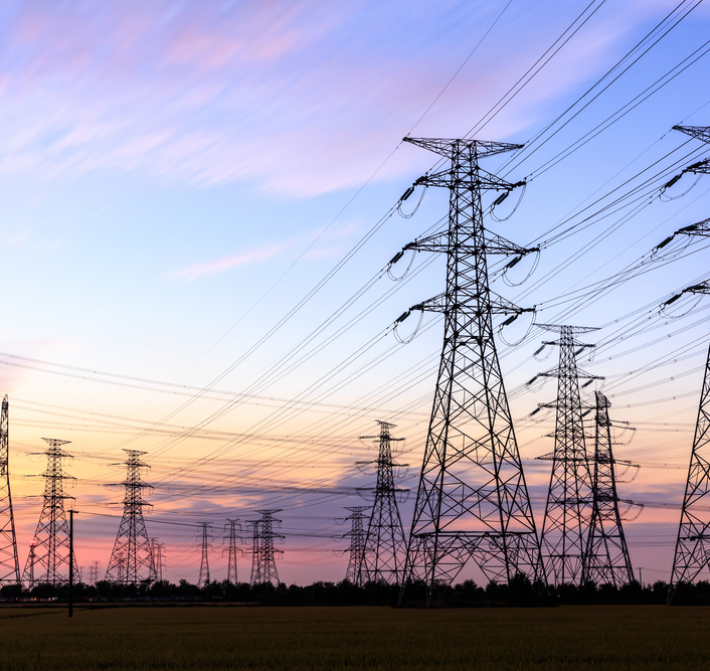
After the events of last Friday (9th August) it seems a good time to review national black-out risk, the one theoretically brought about by a total (rather than partial) shut-down of the national grid. You’ll find it on pages 40-41 of National Risk Register, the current edition of which can be found here.
As our main disaster risks go, it’s a bit of a rarity – because it’s not actually happened at the national scale. Yet. In fact, until quite recently, it was considered a technically feasible but very small risk. Now it’s considered a bit more likely or (more accurately) its likelihood is better understood. This is despite the grid’s operators calling it an 'an unlikely event' in a 2017 publication. So, although it’s rated quite high overall on the national register, we are – to some extent - in uncharted territory here. To get an idea of what the impacts would look like if it did happen, we must extrapolate from lower-level events (localised and short-term black-outs like the recent one) and use a bit of deduction.
A sensitive awareness of our almost total reliance on electricity (at least for what we call normal life) gives us a good start. So, this is a thought experiment. Try to identify any aspects of our modern life that do not rely in some way on a regular, accessible and dependable supply of safe electricity. You might find the answer (which is ‘not many’) uncomfortable and surprising, but also relatively easy to deduce. You also need to put a time frame on it. It is estimated a total shut down would leave most of the UK without electrical power for around a week, and parts of it for up two weeks or more.
Working out from the home we can deduce that the lights won’t work; some (but not all) landline phones might continue to work but devices won’t be chargeable; electrical and gas heating stops; the fridge stops working; the freezer defrosts and the water supply and sewerage will be cut off or erratic. Shops will close because the tills won’t work, refrigeration fails and deliveries won’t be made anyway. Petrol stations are closed. Schools, businesses and factories shut down. Airports might be able to open to some degree, but you won’t be able to get to them. The streetlights are out and public transport is at a standstill. Now, these are only the first order consequences. Further contingent knock-on effects will kick in and multiply very quickly. This is only a single-paragraph and superficial introduction to a scenario that looks like taking us back to the middle ages. There are, of course, various plans that will keep some (limited) elements of the essential services and facilities going – but you get the picture.
People will dig deep into their own resilience; communities will band together and power will be restored in time. If we take an optimistic view, any unfortunate and regrettable outcomes will be balanced by life-affirming experiences and random (as well as organised) acts of communitarian goodwill. That will be a genuine part of the popular narrative, as it is in all disasters.
It is a positive point that everybody will be in it together. Grid start-up procedures will follow their own systems and network logic, so no area or city can be privileged with early connection. Nobody will be able to 'jump the queue'. We know that hardships tend to be more tolerable when they are perceived to be equitably distributed, so social cohesion might be stronger and more robust than we think – despite the shock. But that will have a limit, and this risk may take us beyond it.
On the negative side it could lead to a generalised and enduring state of anxiety - coupled with a heightened sense of vulnerability and less complacency about what a lifestyle like ours depends on. We would, literally, be in dark times. It will probably happen without notice and at first be interpreted as a local power cut. Quite quickly (in a matter of minutes) it will be clear that it is nation-wide.
We can then expect a degree of frustration and, inevitably, some misinformation as rumour fills the information gap. The authorities may be seen as quite slow (in digital media terms) to get the situation clarified and the public ‘properly’ informed. Whether fair or not, this could be the dominant public perception. There will also be concern over the cause of the black-out, and concerns about safety and public order. Everyone will want to know (urgently) one thing; when will power be restored? But for many that answer could be some time coming.
Thinking about this risk leads us to think about how important communication will be in maintaining public confidence and community resilience. After all, the warning side of the warning and informing strategy should be amenable to forward planning and preparation. So, the public could be prepared. The information given on the National risk register would be a useful start.
Also, the severity of the impacts will vary according to the time of year when it happens – so the reasonable worst-case assumption should be mid-winter? Finally, this is about the grab-bag; what back-up means of lighting, heating and non-mains radio reception do we have in our homes, cars and workplaces? Think of the experience of an 'ordinary' power cut on a winter’s night. Then think of that lasting a week.
The Insight Team